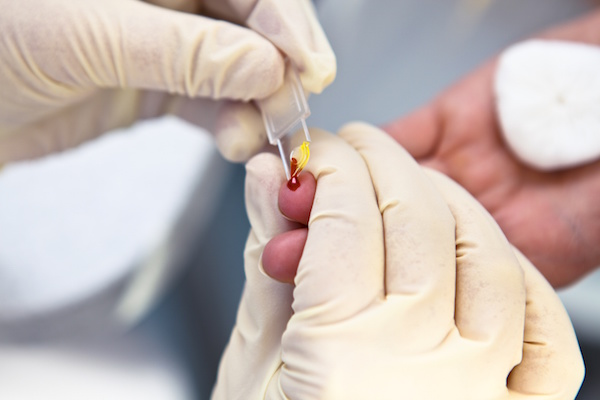
WEDNESDAY, April 28 (HealthDay News) — The Action to Control Cardiovascular Risk in Diabetes (ACCORD) study was abruptly halted in 2008 when researchers noticed an increase in deaths in the group of type 2 diabetics who were being intensively treated to bring their blood sugar levels down to near-normal levels.
Now, a new analysis of data from that study has concluded that a rapid lowering of blood sugar (glucose) levels was not the cause of the increased risk of mortality.
However, even though the researchers were able to exclude intensive diabetes management from their list of suspects, they still aren’t clear what factors may have played a role.
“The original question underlying the study was, would rapid lowering of blood glucose be an explanation for the excess mortality rates?” said study author Dr. Matthew Riddle, a professor of medicine at Oregon Health and Science University in Portland.
“The answer was no. People who rapidly lowered their A1C didn’t have excess deaths,” Riddle said. In fact, “it was the ones who couldn’t bring their A1Cs down that had increased mortality.”
A1C is a test that can estimate two to three months of blood sugar control. The American Diabetes Association recommends that most people with diabetes try to maintain an A1C of 7 percent or less, which translates to an average blood sugar reading of about 154 milligrams per deciliter.
In the ACCORD trial, which included more than 10,000 people with type 2 diabetes, the intensive management group was trying to achieve an A1C level of less than 6 percent, which is a normal level. Most people with type 2 diabetes have significantly higher A1C levels, according to background information in the study.
The reason lowering A1C is important is that other studies have shown that for each 1 percent increase in A1C levels, there’s a 15 percent to 20 percent higher risk of cardiovascular disease. And, in addition, as A1C levels rise, so do the risks of kidney disease, eye disease and nerve damage.
To achieve A1C levels of less than 6 percent, most people with type 2 diabetes would need a combination of medications and aggressive lifestyle changes, such as losing weight and exercising a lot more often.
Initially, the ACCORD study was scheduled to last for almost six years, but the study was stopped during the third year when the researchers discovered the increased death rate. At the time, there were 257 deaths in the intensive group vs. 203 deaths in the usual treatment group.
When Riddle and his colleagues re-examined the data, they found that people in the intensive treatment group who still had higher A1Cs were most at risk of mortality.
Results of the study were published in the May issue of Diabetes Care.
“We need to know what it is about those who couldn’t lower their glucose levels that puts them at greater risk. We need to find more specific red flags for clinicians to look for,” said Riddle.
He added that although most people would like a standard set of goals and advice for everyone with type 2 diabetes, “there’s no one-size-fits-all approach. There are different treatments for different groups, and we need more sophisticated assignment to subgroups for treatment.”
“I think what this paper reveals is that it was not simply the low A1Cs or improved glucose control that account for the higher death rates, and that’s reassuring. It shows that many people can safely achieve good glucose control,” explained Dr. David Kendall, chief scientific and medical officer for the American Diabetes Association.
“It appears that those who continued to attempt medication titration and other changes without success are most at risk. Their diabetes may be more challenging somehow or there may be other barriers that we’re not yet aware of,” said Kendall.
The bottom line, said Kendall, is that there’s no reason to change target recommendations for glucose control for most people.
Riddle said that doctors may need to suspect an increased risk of potential problems in people who don’t have significant improvement in diabetes control after six months or so on aggressive treatment, and that the researchers would continue to try to tease out what factors contributed most to the increased risk of death.
In the meantime, Riddle pointed out that “treatment of type 2 diabetes early in the game, when it’s easier to get good glucose control, should have a high priority.” He added that many people in the ACCORD trial had been diagnosed with diabetes years earlier and were already suffering from diabetic complications.
More information
Learn more about type 2 diabetes and its management from the U.S. National Library of Medicine.

